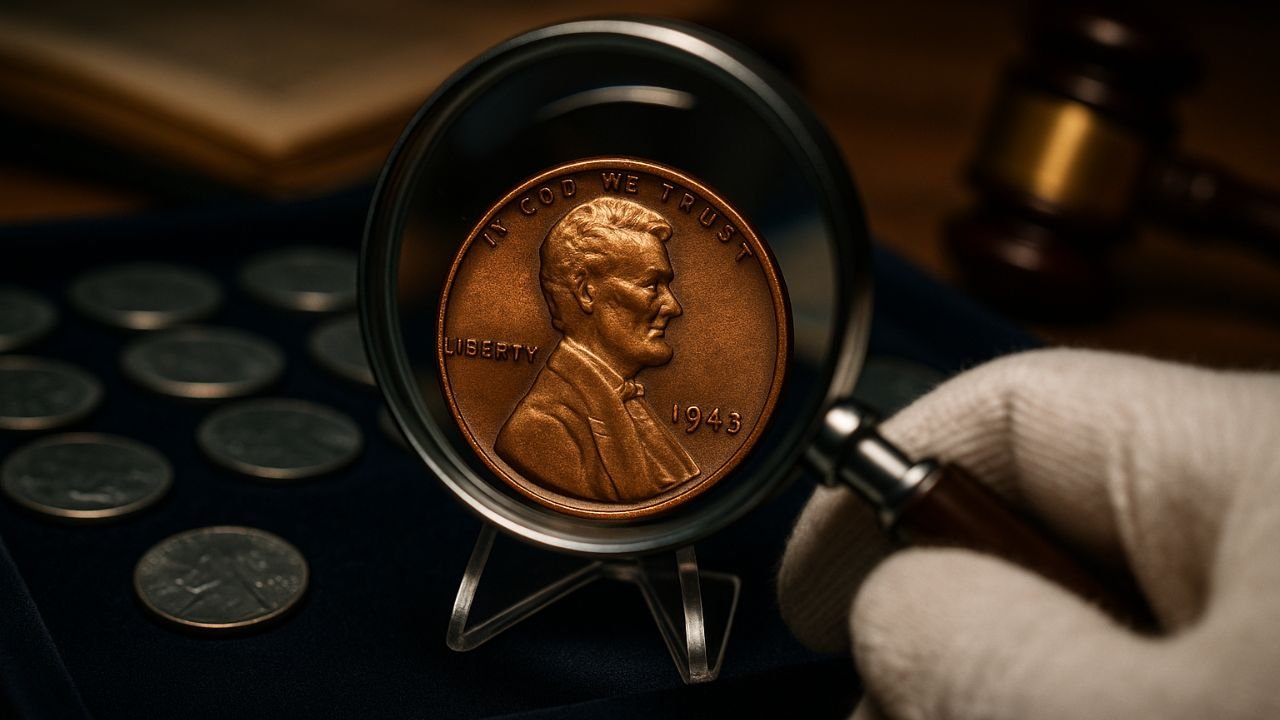Viral posts keep suggesting a Lincoln Wheat Penny could fetch $3.95 million and might still be hiding in pocket change. It’s a great headline—but it doesn’t match verified market history.
The coins that inspire the rumor are the 1943 copper (bronze) cents, struck in error when most 1943 cents were made of zinc-coated steel for wartime metal conservation.
The Real Heavyweights: Proven Prices
Across decades of trading, top Lincoln cent results have reached seven figures, but not $3.95M.
Public records show a premier auction result a little over $1.1 million for a key variety, and a widely reported private sale of the unique 1943-D bronze cent at about $1.7 million.
Those are spectacular numbers—but still far below the viral claim.
Quick Snapshot Of Market Reality
| Item | What Collectors Agree On |
|---|---|
| Headline rumor | $3.95 million for a Lincoln Wheat Penny is unverified in public records. |
| Highest public auction (Lincoln cent) | A little over $1.1 million for a rare variety in top grade. |
| Famous private sale | ~$1.7 million for the 1943-D bronze in high grade. |
| Takeaway | Seven-figure sales happen, but $3.95M isn’t a documented benchmark. |
How Many 1943 Copper Pennies Exist?
Experts estimate fewer than 30 genuine 1943 bronze cents across all mints—Philadelphia, Denver, and San Francisco—with Philadelphia accounting for most, Denver known for a single famous piece, and San Francisco with a small handful.
Because so few exist, values concentrate at the very top end when they come to market.
How To Tell If Your 1943 Penny Is Bronze Or Steel
Finding a real 1943 copper penny would be life-changing. Use these simple screens before you send it for professional certification:
- Magnet Test: A standard 1943 steel cent is magnetic. A genuine 1943 bronze cent is not.
- Weight Test: Steel cents weigh about 2.70 g; bronze Wheat cents weigh about 3.11 g. A true 1943 bronze should be near 3.11 g.
- Look & Color: Steel cents have a silvery gray look; bronze is brown to reddish.
- Watch For Fakes: The most common fakes are copper-plated steel coins or altered dates (e.g., a 1945/48 modified to “1943”).
If it passes the quick checks, submit to a top grader like PCGS or NGC for authentication and encapsulation.
Serious buyers rely on those certifications.
Could A $3.95 Million Coin Appear Someday?
It’s possible a previously unknown, ultra-high-grade 1943 bronze cent (or another dramatic variety) could surface and set a new record.
But based on documented market history, today’s top Lincoln Wheat Penny prices sit in the high six figures to a bit over $1 million, with an exceptional private result around $1.7 million—still well shy of $3.95 million.
Any future sale approaching that figure would be headline news and verified by major grading services and auctioneers.
Key Facts Table: 1943 Bronze Vs 1943 Steel
| Feature | 1943 Bronze (Copper) | 1943 Steel (Zinc-Coated) |
|---|---|---|
| Composition | Bronze (copper-based) | Low-carbon steel, zinc-coated |
| Typical Weight | ~3.11 g | ~2.70 g |
| Magnetism | Not magnetic | Magnetic |
| Color | Brown / Red-Brown | Silvery Gray |
| Rarity | Ultra-rare (fewer than 30 known) | Common (hundreds of millions) |
| Value Range | Six to seven figures if genuine and certified | Modest for circulated pieces |
The claim of a $3.95 million Lincoln Wheat Penny is not supported by the market’s verified record.
That said, genuine 1943 copper pennies are among the most valuable U.S. error coins ever made.
If you suspect you’ve found one, do the magnet and weight tests and then seek PCGS/NGC certification.
While a $3.95M payout is unrealistic today, an authenticated discovery can still bring life-changing money.
FAQs
What is the highest verified price for a Lincoln cent?
A premier public auction result sits a little over $1.1 million, and a notable private sale of the 1943-D bronze reportedly reached about $1.7 million.
Are any 1943 copper pennies still undiscovered?
Possibly. With fewer than 30 believed to exist, an unknown example could surface—but genuine finds are extremely rare.
Is my 1943 steel penny valuable?
Most 1943 steel cents are common and worth modest amounts in circulated grades. Only the bronze (copper) 1943 errors bring six- or seven-figure prices when certified.

